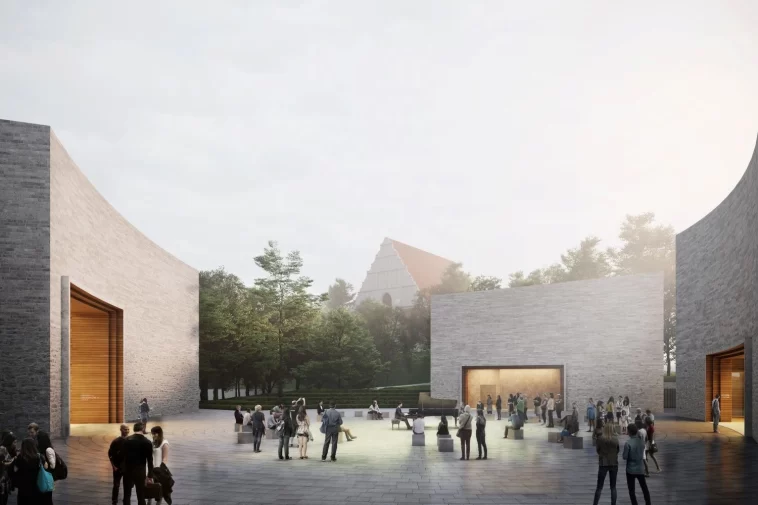Poznań, Poland – November 1, 2024 — Warsaw-based architectural firm WXCA has unveiled the design for the new Greater Poland Uprising Museum in Poznań, a landmark project honoring one of Poland’s most significant historical events. The museum, dedicated to the memory of the 1918–1919 uprising that led to Poland regaining independence from German rule, aims to become both an educational and cultural beacon, providing a modern space for history, remembrance, and community engagement.
A Modern Tribute to Historic Struggle
WXCA’s design for the museum integrates architectural modernity with symbolic representation. The structure combines minimalist and monumental elements that echo the strength and resilience of the Polish fighters who led the Greater Poland Uprising. The museum’s low, elongated profile stretches horizontally across the landscape, subtly nodding to the unity and grassroots nature of the uprising. Featuring glass, concrete, and natural stone, the museum’s façade blends into the surroundings, creating a balance between modern design and respect for the historical site.
Inside, the museum will include interactive and multimedia exhibitions designed to immerse visitors in the historical context of the uprising. By combining traditional artifacts with modern technologies, WXCA’s design will enable visitors to experience the timeline of the Greater Poland Uprising through digital reconstructions, personal testimonies, and historical documents.
Architectural Features and Symbolic Design
One of the most striking features of the new design is the open courtyard, which WXCA envisions as a gathering place for reflection and education. This outdoor space is bordered by walls inscribed with the names of those who took part in the uprising, creating a lasting tribute to the individuals who shaped Polish history. The courtyard will also serve as a venue for commemorative events, making it an interactive space that links past and present.
WXCA’s design prioritizes accessibility and inclusivity, ensuring that visitors of all ages and abilities can fully engage with the museum’s offerings. The design includes a series of ramps, accessible exhibit layouts, and interactive displays that make the museum accessible to everyone, reinforcing the project’s dedication to education and inclusivity.
Sustainable Design for Lasting Impact
WXCA’s design for the Greater Poland Uprising Museum emphasizes sustainable practices, incorporating energy-efficient lighting, green roofing, and water conservation systems. These eco-conscious features reflect Poznań’s commitment to sustainable urban development and position the museum as an environmentally responsible public building.
Additionally, the museum will incorporate extensive use of natural light, filtering sunlight through skylights and open spaces to reduce energy use while creating a warm, inviting environment. This sustainable approach is intended to enhance the visitor experience and create a space that will endure for generations.
Cultural and Educational Hub for Poznań
The Greater Poland Uprising Museum is set to become a vital cultural center in Poznań, offering a new educational resource for students, locals, and tourists alike. The museum will not only commemorate the past but will also serve as a hub for discussions on national identity, freedom, and resilience. Educational programs, workshops, and cultural events will be central to its mission, fostering a deeper understanding of Polish history within the community.
The museum will be located in close proximity to existing cultural institutions, creating a network of historical and educational landmarks in the city. This strategic location underscores Poznań’s commitment to making history accessible and engaging for all.


